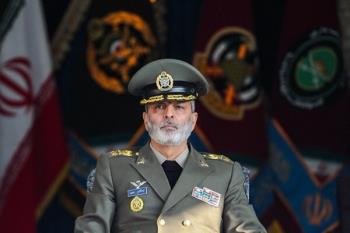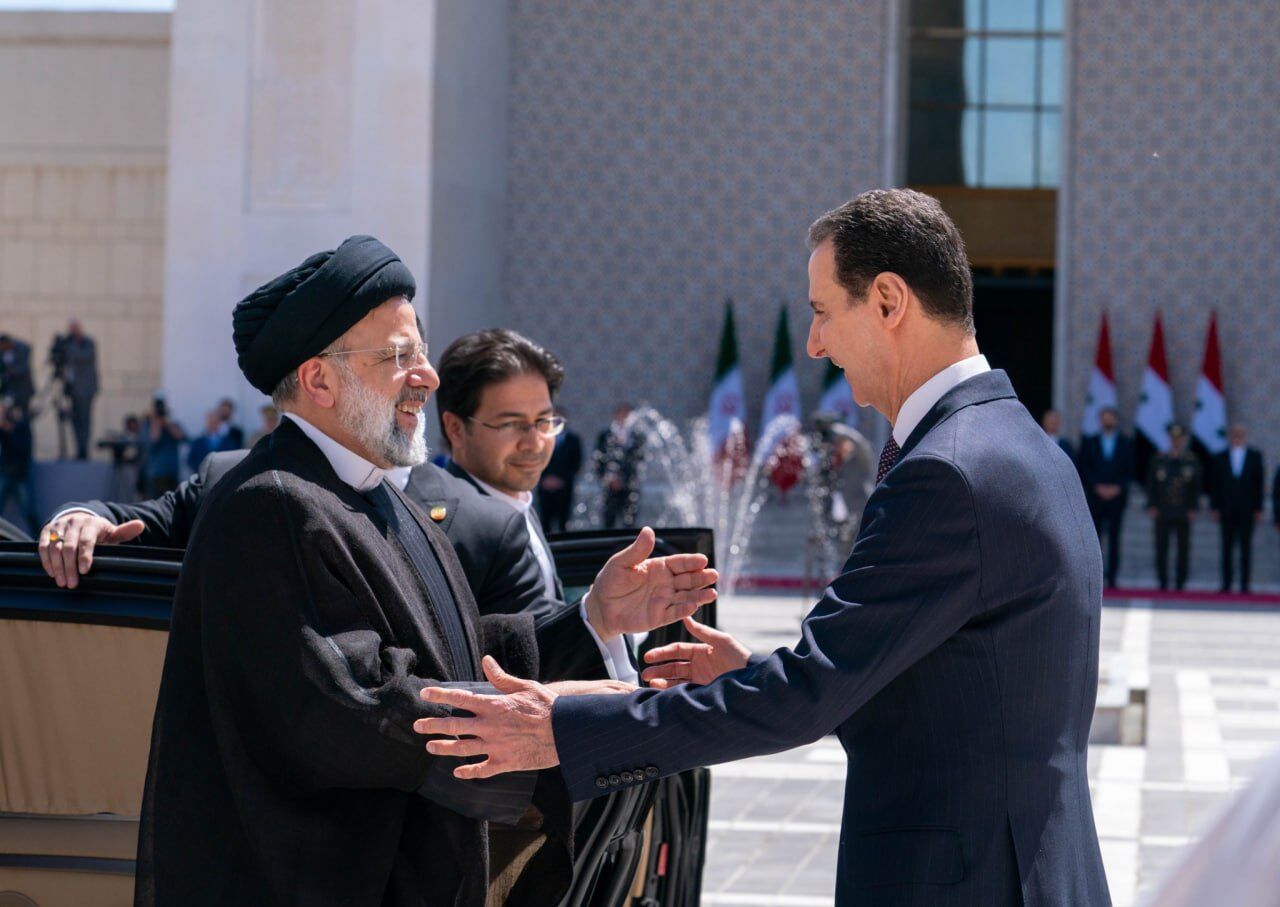Alwaght- On Wednesday, Iran’s President Seyyed Ibrahim Raisi paid a highly important visit to Syria that was the first to an Iranian president since the eruption of crisis in 2011. Over the past years, with the growth of two countries’ cooperation to strategic level, visits of the officials from both countries have been a regular diplomatic scene at short intervals, and even President Bashar al-Assad visited Iran several times despite limitations for foreign trips. Still, President Raisi’s visit to Damascus carries a immense significance and makes a turning point in the bilateral partnership.
Important step to boosting strategic alliance
The visit of the Iranian president comes at a time due to resolute Damascus victory in the 10-year crisis and foiling of the complicated foreign plots in association with such allies as Iran and Russia, a wave of regional relations progresses is embracing the Syrian government and Muslim and Arab countries are resuming diplomatic ties to Damascus one after another, and even it is highly likely Syria would retake its Arab League seat in the bloc’s upcoming summit in Saudi Arabia.
In the meantime, Iran, as Syria’s most important regional partner and ally, has always supported the Arab reconciliation process with the Syrian government, the lifting of cruel economic sanctions against it, and any political initiatives that serve to preserve its independence, interests, and territorial integrity and re-establish its stability. Therefore, President Raisi’s trip to Damascus at this time should be seen as a celebration of the complete victory of the Syrian nation and government.
President Raisi’s visit indicates that Tehran is the main and strategic ally of Damascus and its Syria relations are incomparable to its relations with other regional and international actors and that it is naive to think that an alternative to Iran can be made in Syria through the rapprochement.
During al-Assad’s visit to Tehran last year, Iran’s Supreme Leader Sayyed Ali Khamenei told the president that the countries that stood on the anti-Syrian front in the time of war cannot make honest partners in the time of peace.
Precisely foreseeing such days of Arab countries returning to Syria for reconciliation, the Leader told al-Assad “we should draw the future lines using past experiences.”
Certainly, relations with allies that stand by a country in the critical conditions and pay the price for this company are way different from relations with countries offering friendship only in the time of peace, and upon emergence of signs of crisis in another country, they mobilize their economic, political, security, and military capacities for intervention. So, if peace made in the state of calm, the countries that left a country alone in the time of difficulty cannot be trusted, mainly because infrastructures made in the time of peace can be shaken by crisis and tensions with a small incident.
From Tehran’s point of view, Syria has many strategic advantages for Iran, among which are the establishment of Syria as a strategic gateway to the Arab world, the front line of confrontation with Israel, and perhaps most importantly, an important and cheap communication bridge to reach the allied Lebanese Hezbollah.
Boosting economic cooperation proportionate to security and political alliance
Moving past crisis, Syria is now in the stage of reconstruction, and has many economic needs and, indeed, makes a lucrative market.
In 2014, al-Assad proposed Iran’s participation in the reconstruction of infrastructure of his country to the Iranian officials. At the same time, it was announced that the president considers Iranians to be preferable to be partners for rebuilding his country, given Iran’s support for the Syrian people against the aggression of terrorists and enemies of the Axis of Resistance.
Meanwhile, despite strategic and deep diplomatic relations between the two countries over the past decades, Iran has not acted strongly in securing its major share in the Syrian market and in leading the construction projects after ISIS terrorist demise in the country.
However, under Raisi, whose policy puts regional economic cooperation high on its agenda, efforts to bolster business ties to Syria and create infrastructure for this cooperation began to thrive, and, indeed, President Raisi’s visit to Damascus can make a major step to this end. In January, during his meeting with Syrian Defense Minister Ali Mahmoud Abbas, Iran’s president said that in the time of construction, Iran was ready to stand by Syria by shoring up all-out economic relations.
According to a report by Iran’s customs, Iranian exports to Syria in 2021 were $200 million and from March to August 2022, they reached $93 million. The exports included industrial products such as steam turbines, medical equipment and machinery, medicine and radiopharmaceuticals, wires and cables, ceramic products, electronic equipment and aluminum. Although their trade showed a growth in 2021, it is still far behind their economic capacities. With the beginning of the reconstruction process of Syria and the need of this country to implement projects in housing, airports, power plants, water supply systems, roads, and dams, Iran was expected to get involved in these projects with a high speed, and given the extensive export of construction materials from Iran to Syria, Tehran should be at the top of the countries present in the Syrian reconstruction process.
This is while, for example, Turkey holds about 20 percent of the Syrian market, and according to the Anadolu news agency, its exports to Syria in 2021 was about $1.96 billion, which mainly includes refined petroleum products, wheat flour, animal feed. Or the volume of UAE exports to Syria last year was $667 million. Ankara and Abu Dhabi countries were among top backers of armed groups fighting Damascus.
Therefore, it should be said that top agenda of President Raisi’s visit was economic partnership boost. He attended the joint meeting of Iranian and Syrian businessmen during this trip and discussed ways to better remove the obstacles ahead and make the path of economic cooperation development smoother.
Mehrdad Bazrpash, Iran’s minister of roads and urban development, is currently heading the Joint Iranian-Syrian Economic Commission. Earlier, he had visited Syria and inked Comprehensive Economic Pact with Syria, a move significant in growth of partnership in the future. In an interview with reporters during this trip, Bazrpash said: “Syrian market is attractive for Iranian goods and manufacturers, and the Iranian market can also be a suitable market for Syria so that the balance between the two countries in the economic sector will soon reach a proper level.”
On the other hand, Zahir Khazim, minister of transport of Syria, in a meeting with Bazrpash, announced the increase in the loading and unloading capacity of Latakia and Tartus ports, and talked about plans to increase maritime trade between Iran and Syria up to 10 million tons of goods.
Experts maintain that since maritime trade is time-taking and relatively expensive, completion of the Iran-Iraq-Syria-Mediterranean trade corridor will lower the costs of Iranian exports to Syria substantially. The project can be completed with boost of Bukamal-Qaem border crossing between Syria and Iraq.
In general, beside celebrating end of Syrian crisis, President Raisi’s visit will significantly contribute to opening a new chapter in the strategic relations between Iran and Syria.



























